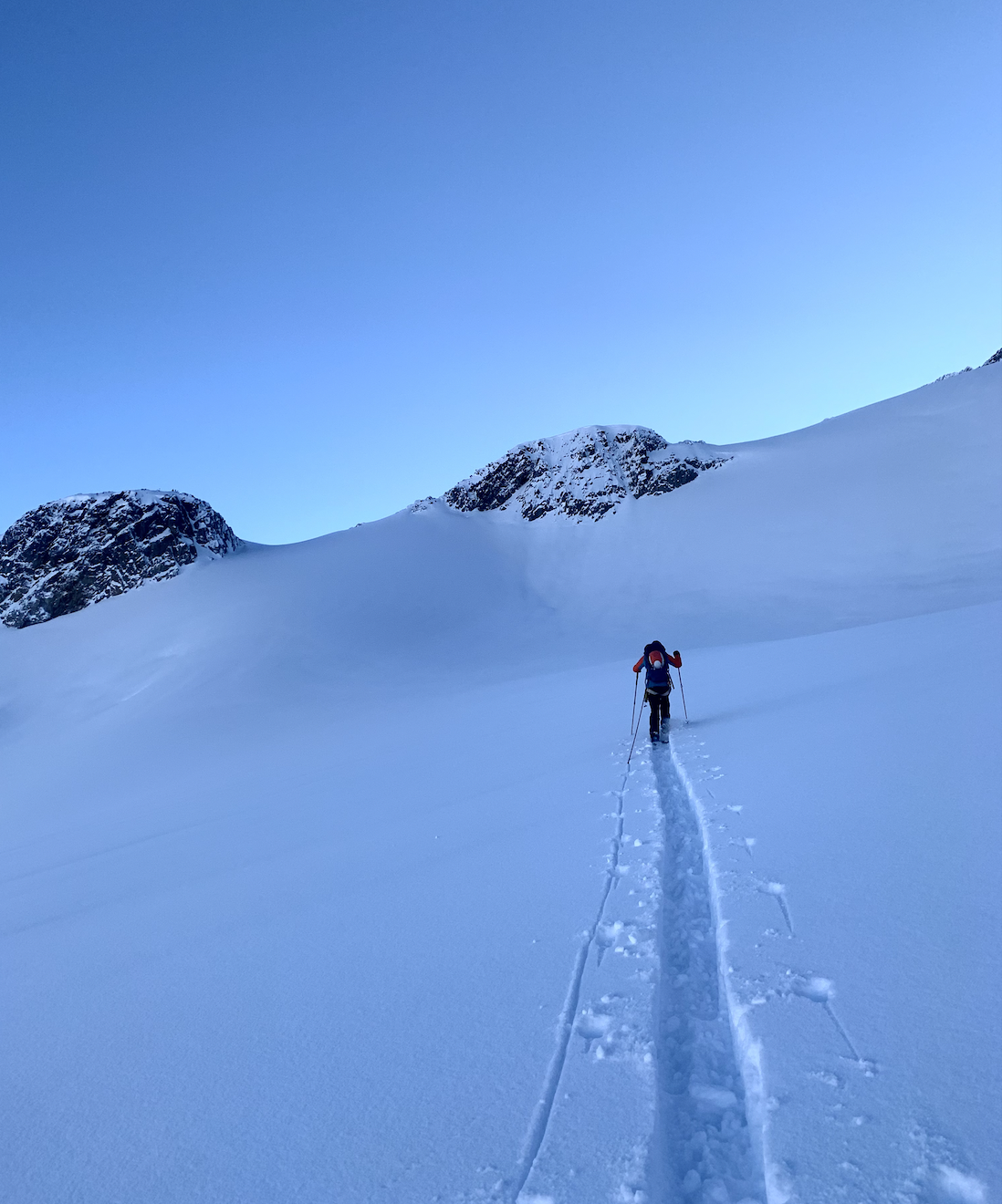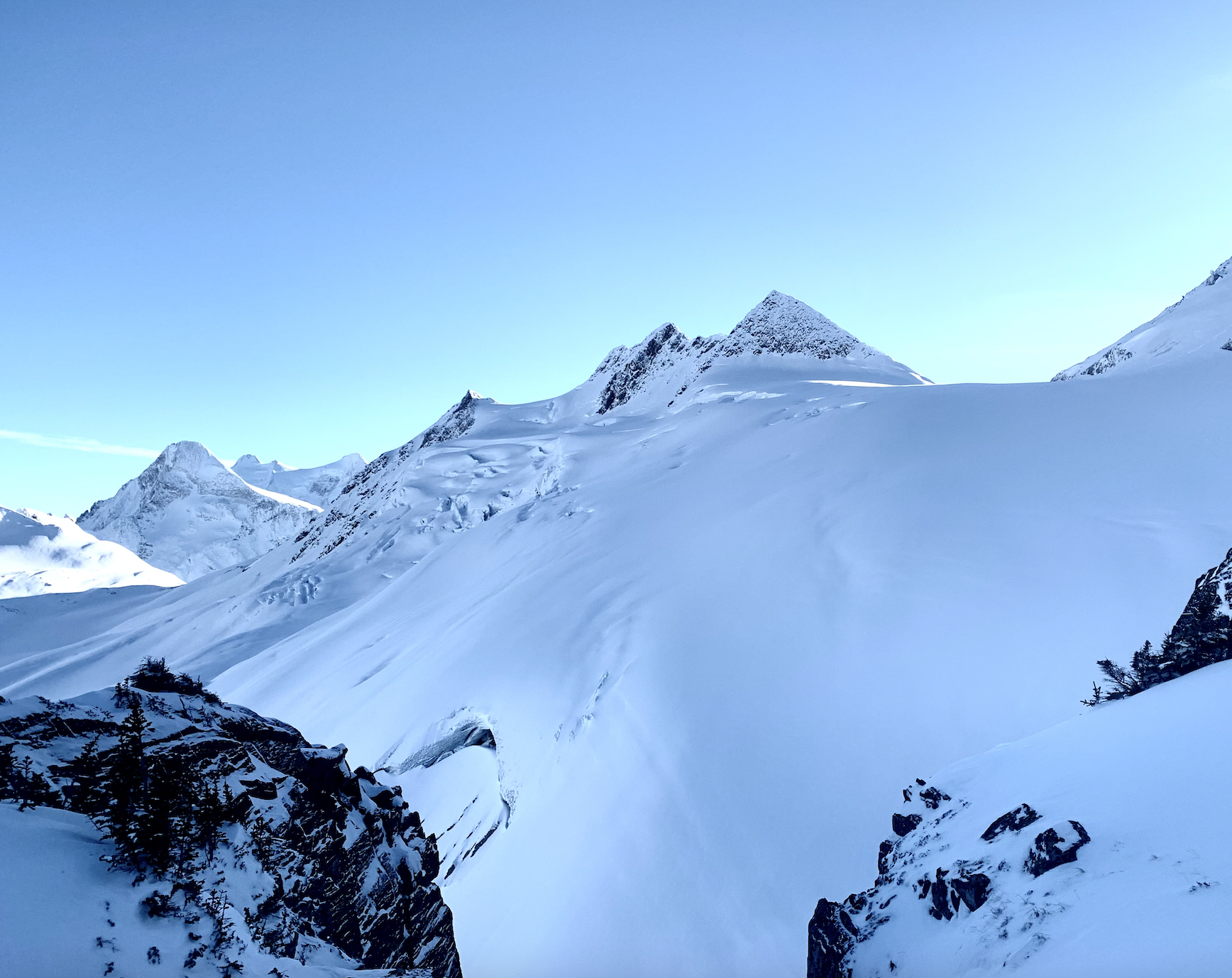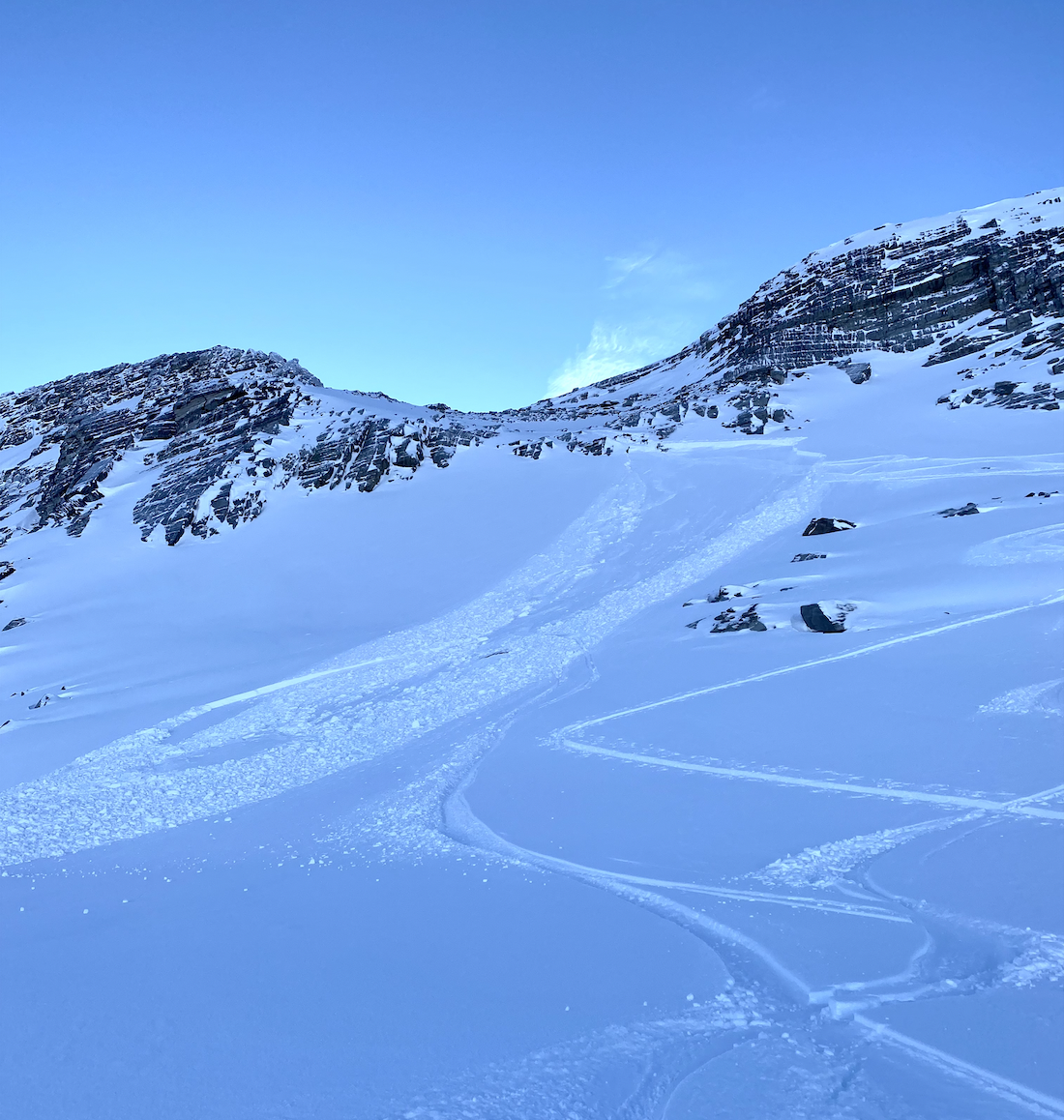We spent Dec 11-12 ski touring in Rogers Pass. Day 1 was on McGill shoulder on a predominantly SW aspect at treeline and below, and day 2 on Dome Glacier, on a NE aspect in the alpine.
Day 1: Skinning up McGill shoulder is still challenging up to 1400m due to early season conditions. We saw very little wind affect on the surface snow at open treeline. The Dec 5th layer gave sudden results in hand shears down 40 cm on 3-4 mm stellars, between 1700-2150 m. No suncrust was found at this interface, and surface hoar was small and isolated. Uptracking lookers left of the prominent avalanche paths, we were able to kick off a few cookies (< sz1) on the Dec 5 interface, specifically on steep rolls, and felt several whumpfs. Likewise, we were able to ski cut several features, producing small and slow-to-move slabs. We witnessed a group ski the west face off of the ridge around 2270 m, and they reported no reactivity to skier traffic in the alpine.
Day 2: We broke trail up to the Dome glacier, noticing very little natural reactivity in the Asulkan valley. We could see tracks coming down the Ravens, the Young Peak headwall, and across the west face of Glacier crest. HS was 115 cm at 1900 m, and the approach to Dome glacier was very thin and rocky. Dome glacier itself had 165-180 cm HS, with several sags visible near the toe and up the ramp to the Cleaver. We had a good view of the Asulkan glacier towards Sapphire col and observed many open crevasses. A party following our skin track managed to trigger a sz 1.5 in the rocks near Dome col, no involvement, with a crown of 60 cm. We suspect that the avalanche was a wind loaded pocket, triggered in a thick-to-thin spot within the facets. Once below 1800 m, the Dec 5th SH/PPsd layer was reactive to skier traffic, with small pillows shearing.
My general impression is that the combination of a few persistent layers, settling storm snow, and low tide conditions is making for a tricky snowpack to manage. Be cautious, investigate slopes, and be mindful that avalanches can still happen with a forecast of “low” hazard.



